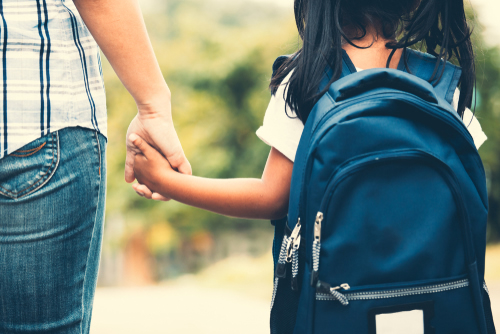As teachers and students return to school across the country, thoughts range from nervous excitement to worries about how to keep school buildings–and the people in them–secure.
Last year’s school shooting in Parkland, FL sparked a massive movement, including student lie-ins and protests, focused on gun control and the irrefutable point that students should not have to worry about injuries or death when walking in school hallways or sitting in classrooms.
As students at Parkland’s Marjory Stoneman Douglas High School pointed out, they aren’t the site of the first school shooting, and unfortunately, they didn’t expect to be the last. In fact, shortly after the Parkland shooting, another school shooting occurred in St. Mary’s County, MD. And earlier this month, a male high school student in Oklahoma stabbed a female classmate, allegedly because she declined to go out on a date with him despite his repeated efforts.
The frightening regularity with which these violent and fatal incidents occur begs the question: What is being done? As policy debates continue amid calls for reform, new efforts and resources have become available to help school leaders, teachers, and students feel safe in their learning spaces.
1. AASA, The School Superintendents Association, released School Safety & Crisis Planning, a toolkit for proactive best practices before, during, and after a crisis. Specifically designed for superintendents and other district administrators, the online resource features a select group of safety leaders throughout the country who are ready to provide peer-to-peer guidance about a variety of crises, including school shootings, hurricanes, tornadoes, floods, fires, suicides, and other major incidents that arrive without a moment’s notice.
2. School districts across the country are looking to launch new safety initiatives in response to changes in state laws and federal recommendations, but they often struggle with where to find the funds for these initiatives. To support these efforts, Impero Software is offering a $2.5 million School Online Safety Grant. The grant will give U.S. education establishments $1,250 to $25,000 toward the purchase of Impero’s online monitoring software, Impero Education Pro. Applicants can apply through Sept. 30, 2018. The School Online Safety Grant is designed to help schools and districts meet the new recommendations on assessing threat and defining behaviors as outlined in the Enhancing School Safety Using a Threat Assessment Model and K-12 School Security safety guide from the Department of Homeland Security. The grant specifically targets schools that want to go beyond addressing the physical security needs of their buildings. The Impero Education Pro software allows schools to monitor students’ activity on the school network and can help to identify potentially concerning behavior related to threats of violence, as well as bullying, self-harm, radicalization, and more.
3. A partnership between AASA, The School Superintendents Association and citizenAID North America targets preparedness for the aftermath of traumatic incidents. The latest addition to AASA’s School Solutions Center will provide teachers, building leaders, and administrators throughout the country access to basic school safety and trauma-care training courses, as well as Public Treatment Kits to prepare schools in cases of emergencies. Along with the online courses that complement existing school safety procedures, citizenAID offers a free mobile app that would provide educators with step-by-step guidelines in cases of emergencies. The app is intended to reduce anxiety from difficult decision-making during unfamiliar situations.
4. Sandy Hook Promise is gearing up for its national Start With Hello Call-to-Action Week, the week of September 24th–28th, as a way for students to create a connected and inclusive community as soon as they get settled back in school. Start With Hello teaches students how to break the ice to help combat social isolation.
5. In a nod to the important role technology is now playing in terms of safety for students, Sandy Hook Promise launched its Say Something Anonymous Reporting System app earlier this year to schools and school districts across the county. With students being the eyes and ears of their school community, the app will give them a way to anonymously report at-risk behaviors among their peers.
6. RealNetworks, Inc. has made SAFR for K-12, an AI and machine learning-based facial recognition solution, free for K-12 schools. The solution is intended to better protect the school environment. SAFR currently supports Mac and iOS platforms, with Android and Windows versions scheduled for release this fall. SAFR uses existing IP-based cameras and readily-available hardware to recognize staff, students, and visitors in real time to help improve school safety, while concurrently providing additional benefits that strengthen security, such as streamlining entry, record keeping, campus monitoring, and guest check-in. SAFR encrypts all facial data and images to ensure privacy, and all facial data and images remain exclusively within the school’s domain as part of, or complementary to, an existing school ID system.
- Educators love their edtech, but want more training - April 18, 2024
- Friday 5: College and career readiness - April 12, 2024
- Cybersecurity: eSN Innovation Roundtable - April 11, 2024


